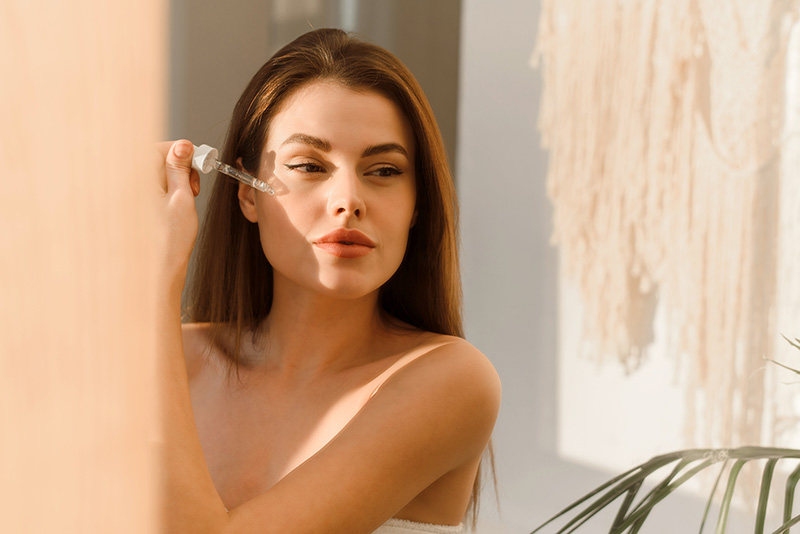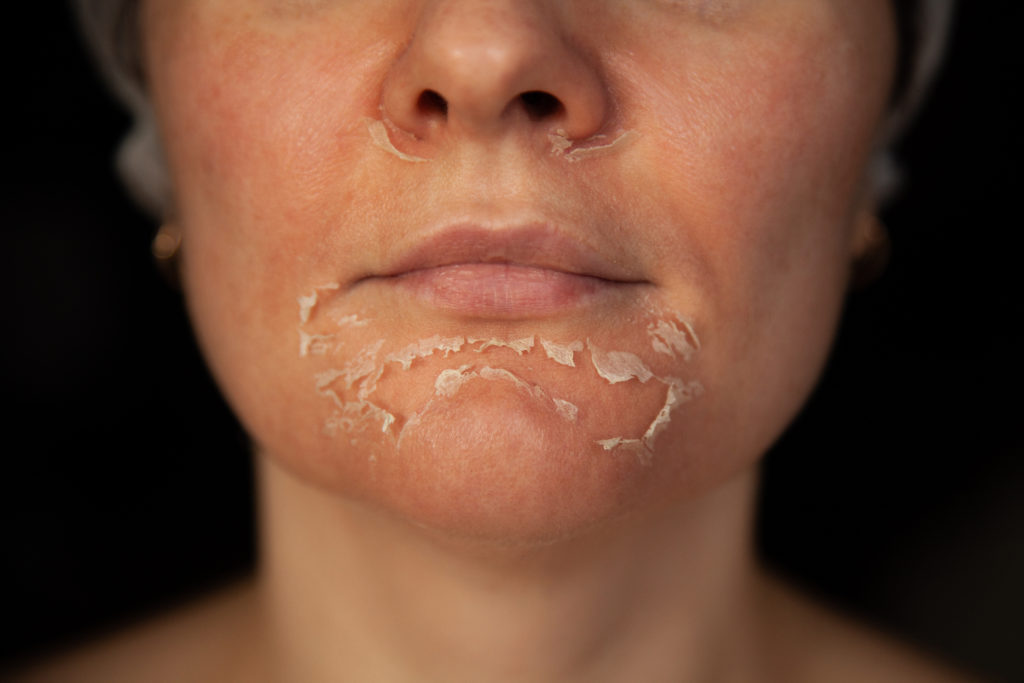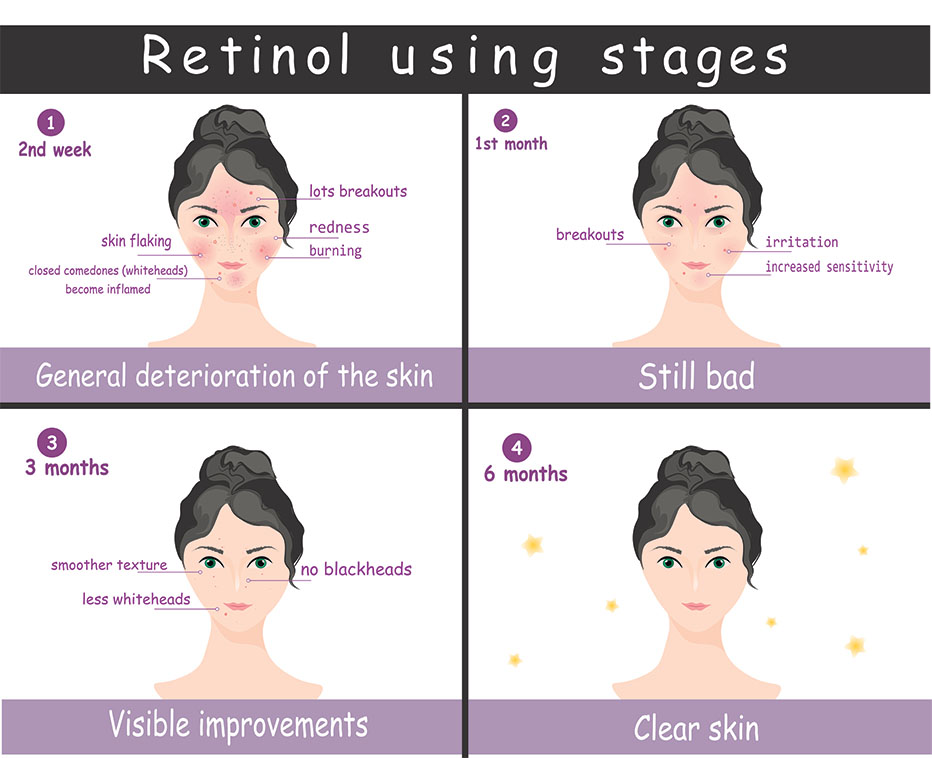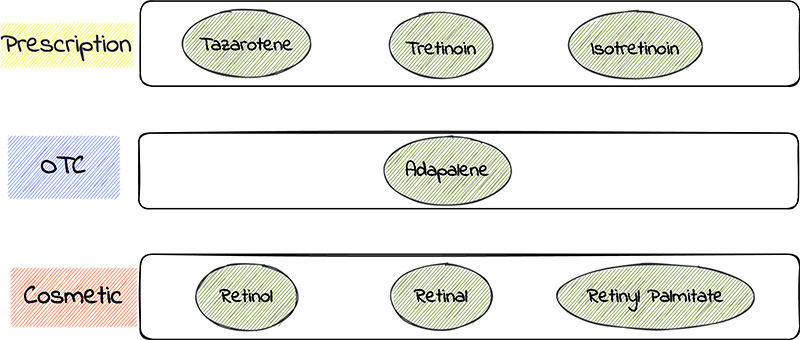In the Skincare industry, these two names, Hyaluronic acid and Retinol have been taken repeatedly. Very honestly, both the ingredients are the bomb, but they are pretty opposite in nature.
Let’s know the sweet Hyaluronic acid up-close
Hyaluronic acid is a humectant that basically pulls the water/moisture onto the surface from within the deep layers of the skin. It hydrates the skin keeping the lipid barrier strong which means, no loss of moisture from the skin (epidermis) resulting in healthy and youthful skin.
Hyaluronic acid helps skin look so very hydrated and plump. How? `By holding 1000 times its weight in water, Hyaluronic acid makes the skin look very plump and dewy.

What does Hyaluronic acid do for our skin?
This is quite impressive. So read on:
- Hyaluronic acid is known for its calming nature therefore any kind of redness, or irritation caused by acne medications or in general are taken care of by this darling product.
- When your skin is fully hydrated after using Hyaluronic acid, skin aging automatically slows down a bit. How? Because Dry skin is the biggest reason for fine lines and wrinkles.
- Improves skin’s rough texture by making it smooth for makeup application.
- Hyaluronic acid is the friendliest and sweetest acid in nature hence no clashes if layered or paired with any other acid, medicine, or serum.
- Anybody can use it. Hyaluronic acid is suitable for all skin types: oily/dry/combination/normal/sensitive
- It’s affordable! Something so amazing with enormous skin benefits.
Always be the boss of your product and know how to use it perfectly.
How to use Hyaluronic acid in your skincare routine?
- The most important rule is, always layer Hyaluronic acid with a moisturizer and seal the skin. If you don’t and if the air around you is dry, the dry air draws moisture from deep layers of your skin and makes the skin even drier; leaving the skin uncomfortably tight. So don’t forget the moisturizer.
- When using other ingredients, acids, or serums, use Hyaluronic acid as the last serum before the moisturizer followed by sunscreen.
- Apply Hyaluronic acid on clean damp skin, it absorbs amazingly well on damp skin.
Best Product Recommendations for Hyaluronic acid
- Hyaluronic acid Face Serums: The Ordinary Hyaluronic Acid 2% + B5, Loreal Paris Revitalift 1.5% pure Hyaluronic acid face serum, La Roche Posay Hyalu B5 Pure Hyaluronic acid serum, The INKEY list Hyaluronic acid serum.
- Hyaluronic acid Face Moisturizers: Neutrogena Hydro boost hyaluronic acid gel, COSRX hyaluronic acid Moisturizing cream, CETAPHIL daily hydrating lotion for face with Hyaluronic acid, LANEIGE water bank Hyaluronic cream moisturizer, Hada Labo skin plumping gel cream with super Hyaluronic acid and collagen.
- Hyaluronic acid Body Lotions: Advanced Clinicals Hyaluronic acid cream moisturizer, Neutrogena hydro boost body gel cream.
Now you have a good knowledge of Hyaluronic acid. Great job but our hero ingredient is coming up next. Who is it?
It’s RETINOL
It is the Star ingredient, The Tom Cruise of the beauty industry!! In the skincare industry, there is no substance more googled, loved, praised, and misunderstood than Retinol. ha-ha.
(After reading this article, you’ll know how you can slow your skin aging)
Know it scientifically first, Retinol is a derivative of Vitamin A. Retinol is frequently confused with Retinoids (also a derivative of vitamin A) but in easy language, Retinol is comparatively milder than Retinoids hence it’s easily available over the counter, while Retinoids need a prescription.
Because it is mild, it also works slower compared to Retinoids yet is very effective in treating all our skin concerns.
- Retinol stimulates Collagen production in the skin by speeding the skin cell turnover rate to double.
- Treats acne-prone skin and acne scars.
- Works wonders for all skin aging signs like fine lines, wrinkles, and sagging skin and also helps with treating hyperpigmentation. What more could you ask for from a single ingredient, right?

But nothing this good comes without a catch, using Retinol comes with a strict set of rules one needs to follow while applying it otherwise the ingredient can backfire!
You can take maximum benefits out of Retinol by sticking to these tried and tested tips
Retinol – Pro Tips to Incorporate into your skincare routine

- Wear sunscreen when you’re out during the day. Using Retinol makes your skin highly photosensitive, which means the skin is very sensitive to UVB rays of the sun.
- Use Retinol only at night time.
- Do not mix Retinol with any other ingredient without first reading about it thoroughly as it doesn’t gel up with most of the ingredients.
- Use it at some distance from your eyes, mouth, and nose.
- For sensitive skin types and newbies, always start with the lowest concentration of this potent ingredient, like .025% – 0.1%, 2-3 times a week. When your skin is well adjusted, you can increase up to 1%.
- Pls, do not exceed the quantity of the Retinol cream to more than a pea size. Too much quantity does more harm than good.
- Don’t forget to use it on your neck as well, the neck area ages even faster than your face because of thinner skin.
- Don’t use Retinol on damp skin. Pat your skin dry completely and then apply.
- Don’t forget to layer it with a moisturizer followed by sunscreen.
- It may take up to 8-12 weeks to produce visible results so be patient. Once you start this journey, you won’t stop.
- Try and avoid any other potential irritants like acids or chemical exfoliants in your routine when you’re starting your Retinol journey. This can at least cut down the chances of over-exfoliation.
- Bear with the Retinol Purge Phase.
Who should not use Retinol?
- Pregnant/Nursing women
- People with Rosacea and eczema, unfortunately, shouldn’t use Retinol. It will make the dry skin worse.
When should you start using Retinol?
The starting age for using Topical Retinol for skin can be early 20s with proper precautions and low concentration.
People with Ivory skin tones are more prone to early wrinkles and aging signs than compared with deeper skin tones, hence they should start to use at least a low concentration of Retinol in their early 20s.
Extra tip when using Retinol (Only if you are experienced and have strong skin buildup)
To experience the deepest level of skin penetration, you might want to use it after you exfoliate, so your skin is maximum receptive to it.
Now, Let’s see how this charming ingredient works on our skin. (FYI: This is the most interesting and satisfying part)
How Retinol Works on Your Skin
- When we start aging, our cells don’t regenerate as quickly as they did when we were young.
- Now, Retinol directly affects our gene expression, regulating all our age-related issues by eliminating dead skin cells and allowing fresh, young skin cells to come up to the surface.
- It goes deep into the layers of the skin and exfoliates the skin from within. It also clears up acne by cleaning the pores and eliminating bacterial growth.

Know some shopping secrets for Retinol (Most uncommon info)
Now that you have already come so far, you probably have a good enough idea of the term ’retinol ‘. So, let’s find out how to shop for it correctly.
Packaging
Retinol packaging is literally everything, which surprisingly very few people know of & I really want you to be a pro when choosing or using your product.
Air Exposure means retinol death. We don’t want that pls!
There are 4 types of packaging in the market.
- Tubes (Best)
- Pump bottles (Better)
- Serum bottles (Okay)
- Jars (NAH)
Tubes are undoubtedly the best & the safest form to use Retinol. If you can’t find those, you can go for Pump bottle packaging but beware of the Jars with those big lids. They literally don’t make sense.
Storage – How to store Retinol to maintain shelf life
Retinol is not a very stable ingredient in nature & perhaps it likes to stay in cool, dark places, far away from sunlight, (almost like a vampire LOL). Hence your bathroom cabinets work just fine.
Formula concentration
Retinol is no joke you guys, it’s something that can do serious harm or serious good, depending on how you use it!! So once again GO SLOW initially! With concentration, application size, and frequency.
I have seen a few companies claim a whopping concentration of 2% Retinol. Run ha-ha
What if Retinol doesn’t suit your skin at all and you still wish to use it for the obvious gorgeous benefits? I mean that’s kind of a sad situation, right? …Well, not really.
Bakuchiol
- We have a cool new kid on the block whose properties are almost all the same as Retinol, but it’s derived from plants, Hell yes! It’s vegan and natural. It’s called ‘Bakuchiol’. It is popularly known as the plant Retinol.
- Very gently it takes care of aging symptoms like fine lines, wrinkles, and uneven skin tone.
- It helps with skin’s firmness, minimizing the pores without any flakiness, dryness, or redness, unlike Retinol.
- So, it’s an all-win product for people who either can’t tolerate Retinol or are pregnant or just beginners.
Now that we know these superstars individually, let’s compare them face-to-face for an even clearer understanding.
| Hyaluronic Acid | Retinol |
| Works on plumping, healing, and hydrating the skin on the upper layer. | It goes deep into the layer of skin and exfoliates from within. Increases collagen production of the skin by boosting skin cell turnover. |
| Results can be seen immediately | Results take weeks-months. |
| Can be layered with any acid or ingredient without worrying | Compatible with very few ingredients |
| Can get over the counter | Can get over the counter though higher concentrations require a prescription. |
| Not that effective for the treatment of acne | Superb for treating acne |
| No worries about Photo-sensitivity | Increases photosensitivity |
| Can be applied any time of the day | Must be applied only at night |
| Almost no cases of major side effects | Retinol can have side effects if not applied properly, doesn’t suit sensitive skin types, and doesn’t suit people with Eczema and Rosacea conditions. |
Retinol Family Tree
Now here’s some bonus information from me to help you know about the Complete Retinol family. (It will help you a lot with your confusion in buying any kind of Retinoids).


Retinoid is the head of the family if I put it in a clear easy way. It is divided into 7 main types (with recommended percentage) or has 7 children for easy understanding ha-ha.
- Retinol (the most popular child)-0.1% – 1.0%
- Retinyl palmitate (it’s almost pointless so don’t even bother)- 1%
- Retinal (not easy to find in products because of serious stability issues but it’s an alternative to Retinol if you’re looking for something with more efficacy)-0.1%-1.0%
- Retinoic Acid or Retin-A (Gold standard Retinoid, very commonly prescribed as Tretinoin by dermatologists for treating mature skin issues. It is 20 times more powerful than Retinol. Only available by prescription)-0.01-0.1%
- Adapalene (It is available over-the-counter and has solid effective results in treating acne and wrinkles)-0.1%
- Tazarotene (Used for Hyperpigmentation and acne scars. Only available by prescription)-0.1%
- Isotretinoin (It is an Oral Retinoid. It’s prescribed to treat severe cystic acne).
Product Recommendations for Retinol
Here are some of the best products containing Retinol:
1. Differin Gel – Adapalene is an evidence-based ingredient that is also FDA Approved to treat acne, and repair aging signs of the skin like fine lines and wrinkles with long-term use. Price: 18 USD
2. La Roche Posay Adapalene – Same ingredient- Adapalene with different brand names. Adapalene is a mild form of Retinol compared to Tretinoin or other forms of Vitamin A. Price: 37 USD
3. Avene Retrinal 0.1 intensive – It contains Retinol and Peptides and is one of the soothing retinol formulations which makes it feasible to use even around the eyes. It has some great reviews on curing crows’ feet around the eyes, wrinkles around the mouth and lines on the neck. Price: 74 USD
4. Cereve Resurfacing Retinol– It’s a combination of Retinol, Niacinamide, Licorice root, and Ceramides. This nongreasy gel textured formula is even suited for people with skin conditions like Rosacea. It’s a mild retinol formula compared to other retinol products. Licorice root brightens the skin, niacinamide helps calm the redness of the skin and ceramides strengthen the skin barrier which makes it a brilliant product for everyday use. Price: 23 USD
5. Neutrogena rapid wrinkle repair regenerating cream– This creamy and rich moisturizer is a wrinkle fighter for your skin. The description on its packaging claims that it starts to reduce the appearance of dark spots, wrinkles, and dullness in just one week of usage. Price: 28 USD
Can you use Hyaluronic acid and Retinol together at the same time?
How to use both Hyaluronic acid and Retinol together in your skincare routine
- Wash your face with a fragrance-free gentle cleanser.
- Pat the skin dry completely with a facial tissue or a clean towel.
- Put a few drops of Hyaluronic acid first to offset any irritation. Massage it nicely with light circular strokes.
- Use a pea-sized amount of retinol cream or retinol serum. Massage it evenly on your face and neck taking care of the eyes and mouth areas. As a tip, you can also use some Vaseline before applying retinol on those corner areas for extra protection.
- Layer it with a non-comedogenic moisturizer.
- Never forget to put sunscreen on at the end.
Conclusion- Retinol vs Hyaluronic acid
- If you are looking for something to treat your acne and fight premature skin aging signs, go for Retinol.
- If you are looking for something which can calm your skin and make it dewy and plump go for Hyaluronic Acid.
- Combining Hyaluronic acid and Retinol together is a double dose of happiness for the skin. Any potential dryness or irritation caused by Retinol can be combated by applying Hyaluronic acid as the first layer on the skin.